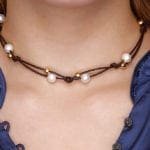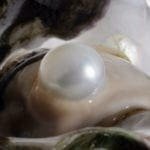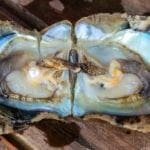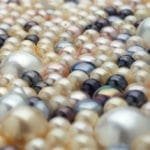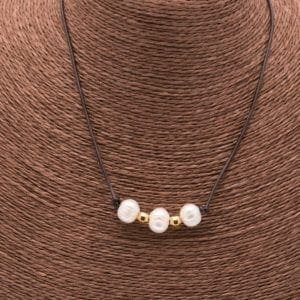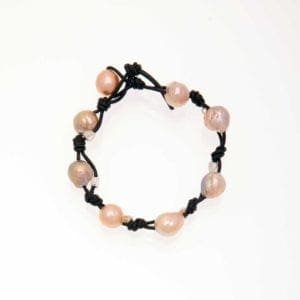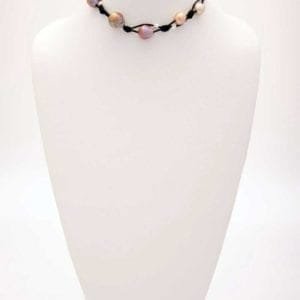Pearls are some of the most coveted stones in the world…and for very good reasons. However, not all pearls are created equal.
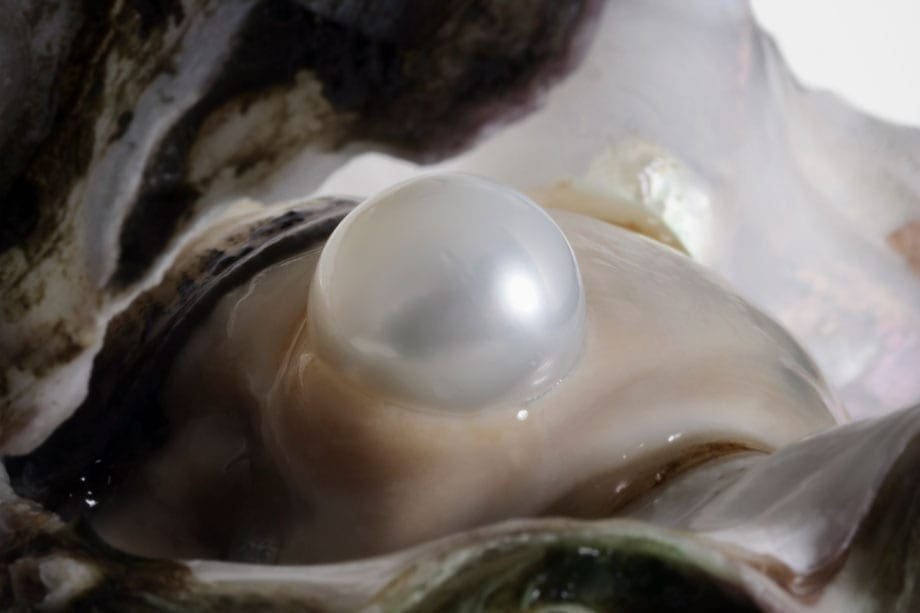
There are several factors that weigh into how pearls are formed. One of the biggest being that—depending on the type of pearl—it either formed naturally or was cultivated by man.
Over the next few minutes, you’ll learn about several of those factors and how they affect the overall quality and authenticity of a pearl.
Specifically, I’ll be answering four main questions that a lot of pearl lovers instinctively consider once they begin their research into these precious gems:
- What is a pearl?
- How does a pearl form?
- How long does it take for a pearl to form?
- What are the differences between natural, cultured, and imitation pearls?
The goal of this article is to communicate an educated perspective of what pearls are and the modern creation of natural, cultured, and artificial pearls.
Let’s begin!
Question 1: What is a Pearl?
In simplest terms, a pearl is
While nearly all mollusks are able to produce pearls, the pearls used in the global jewelry industry come from mollusks whose shell is lined with a substance called nacre. The most common mollusks that produce pearls are oysters, clams, and mussels.
The beauty of pearls is that they form while the animal is alive. Though, as you’ll soon learn, the birth of a pearl is not an overnight process.
Question 2: How does a Pearl form?
The formation of a pearl is a phenomenon that many seek to understand in greater detail.
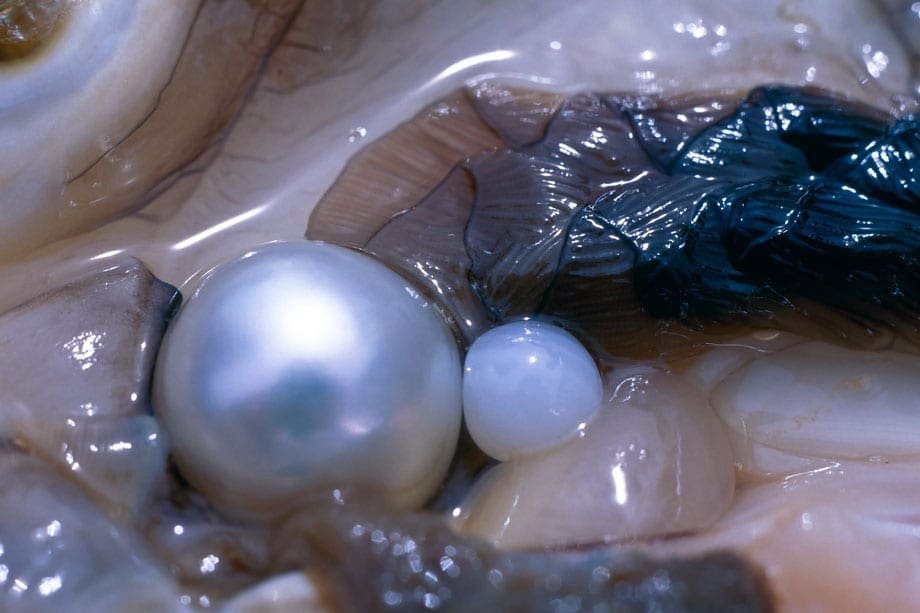
The foreign object is “attacked” by the mollusk through the secretion of a strong, smooth, opaline substance called nacre. The mollusk continues to secrete nacre for as long as the object is present in its body. Hence, over time, these layers of nacre deposit form into a pearl and gains in both size and luster.
Nacre is referred to as the mother of pearl and naturally coats the inner lining of most mollusks’ mantle, including clams, oysters, and mussels.
The Irritant
The irritant that enters the body of the mollusk serves as the nucleus of the pearl that is formed.
That irritant can either occur naturally or be placed by man. The difference between natural and man-made irritants is significant to the type of pearl that is produced.
Natural irritants include things such as sand, bacteria, and pieces of mantle (the outer wall of the inner part of the mollusk’s shell). When a natural irritant is at the core of a pearl, the pearl produced is natural.
An unnatural or man-made irritant is one that is placed inside a clam, oyster, or mussel. An unnatural irritant is generally a sample of mantle tissue taken from another mollusk of the same species. When an unnatural irritant is at the core of a pearl, the pearl produced is cultured.
Question 3: How long does it take for a Pearl to form?
The time it takes for a pearl to form depends largely on the type of pearl that is being made.
The creation process for natural and cultured pearls can take anywhere from six months to 20 years!
Fun Fact: The first pearl was discovered some 530 million years ago!
The specie of mollusk and the environment in which it lives are two factors that contribute to how long it takes for a pearl to form:
Saltwater Pearls versus Freshwater Pearls
Saltwater pearls are produced by mollusks living in a saltwater environment, specifically the Atlantic, Indian, and Pacific oceans. The period of maturity for saltwater pearls can be as short as three years to as long as 20 years.
The average amount of time it takes for a saltwater pearl to form is five years. Also, the bulk of saltwater pearls are produced by saltwater oysters.
Freshwater pearls are mainly cultured pearls that are produced by mollusks living in man-made reservoirs, lakes, mollusk farms, and other water habitations. The bulk of these pearls are produced in China. The period of maturity for freshwater pearls can be as short as six months to as long as six years.
The average amount of time it takes for a freshwater pearl to form is 24 months. Also, the maority of freshwater pearls are produced by freshwater mussels.
Question 4: What is the differences between natural, cultured, and imitation pearls?
As you learned earlier, pearl creation is driven by several distinct factors. Based on those factors, you’ll be able to tell if you’re dealing with a natural, cultured, or imitation pearl.
Natural Pearls
The most beloved of all pearl types is the natural pearl—however, it is also the rarest and, when one is obtainable, the most expensive.
The natural pearl is one whose formation was completely caused and controlled by the naturally-occurring processes of nature. In other words, there was no human intervention at all.
Today, getting ahold of a natural pearl is not an easy (or affordable) task, as these pearls are reserved for fine jewelry producers, connoisseurs, and collectors.
Cultured Pearls
Cultured pearls undertake the same growth journey as natural pearls. But there are two distinct differences between a natural pearl and one that is cultured:
- Cultured pearls are primarily produced by mollusks who live in controlled environments (e.g., mollusk farms; man-made reservoirs)
- Cultured pearls are the result of irritants that were intentionally introduced to the mollusk
Human intervention during the growth of a cultured pearl means that the entire process can be closely monitored and pearls can be produced according to strict standards and other industry expectations.
The largest and most beautiful cultured pearls are those that have been cultured for at least two to three years.
Today, cultured pearls account for more than 95% of pearls sold in the retail market.
Imitation Pearls
As the name suggests, imitation pearls are fake pearls. These pearls are also called artificial pearls, simulated pearls, man-made pearls, wax pearls, and alternative pearls.
Imitation pearls are created entirely by man and are most commonly produced using plastic, ceramic, glass, crystal, mollusk shell, or some combination of these as the nucleus, or center, of the pearl.
The faux luster and imitated value of the pearl is produced by coating the product with a chemical solution. Nevertheless, improved technologies and production standards have paved the way for imitation pearls to boast similar luster and value as their cultured and natural cousins.
Though fake pearls are far from the real thing, their reputation is surprisingly strong—mainly because real pearls are not affordable for the everyday pearl lover. As a result, simulated pearls help produce a sense of affordable luxury and charm for the wearer. Today, the epicenter of the imitation pearl industry is Majorca, Spain.
A Final Note
Again, no two pearls are created equal.
Natural and cultured pearls vary drastically in everything from size and color, to luster, shape, and type. However, every aspect of a pearl is unique to it, making its value unique as well.

